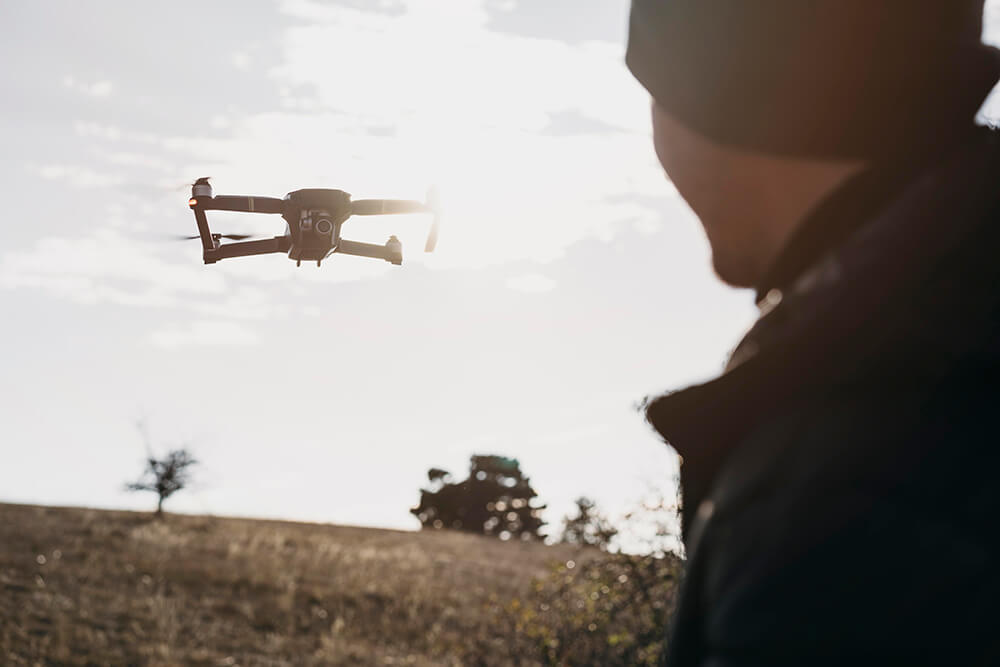Drone cinematography has revolutionised filmmaking, opening new possibilities for visual storytelling. Once limited to high-budget productions with helicopters or cranes, cinematic aerial shots are now within reach of anyone with a drone and the right skillset.
Drone filming has become increasingly popular in Thailand, both among amateur creators and commercial film crews. Over the past decade, filmmakers have embraced drones to capture angles and movements that were once impossible. Whether it’s soaring above tropical beaches or gliding over temples at sunrise, drones are reshaping the visual language of cinema.
If you’re looking to get started with drone videography in Thailand or planning a commercial film shoot, this guide will walk you through everything you need to know, from legal requirements to practical tips.
What Does Thai Law Say About Drones?
If you’ve spent time on online forums, you’ve probably seen a lot of conflicting advice about flying drones in Thailand. Some travellers say you can skip registration if you’re here for less than 30 days. Others report flying without paperwork in quiet areas and never having a problem.
We’ve observed that in remote spots, it’s not uncommon for content creators to take a quick flight without going through the official process. But that doesn’t mean it’s a good idea.
Thai law is clear: if your drone has a camera, you’re required to register it, no matter how long you’re staying.
Drone operators must register with two authorities:
- NBTC (National Broadcasting and Telecommunications Commission)
- CAAT (Civil Aviation Authority of Thailand)
NBTC handles the registration of the individual and the radio frequencies used by your drone and its remote control. CAAT, on the other hand, is responsible for airspace safety and drone operation regulations.
Both registrations are mandatory, even if you’re flying only for fun and especially if your drone has a camera. Failure to comply can lead to hefty fines of up to 100,000 THB, imprisonment, or both.
Enforcement may vary depending on where you are, but the consequences are real. There are stories of people being fined, asked for bribes, or having their equipment confiscated. And if something goes wrong—say, your drone crashes or causes damage—you’ll be in a much more difficult position without proper registration and insurance.
For professional productions, skipping the paperwork is never worth the risk. If you’re working with a crew, talent, and a tight schedule, even a short delay can disrupt the entire shoot. Permits and approvals are part of making sure everything goes smoothly on the ground as well as in the air.
We’ve helped film crews navigate this process many times. If you’re planning a shoot in Thailand and want to make sure everything is sorted, let us know. We can help take care of the paperwork so you can focus on the creative.
How to Apply for Drone Registration in Thailand
Step 1: Get Insurance
Before anything else, your drone must be insured. A basic liability policy with a coverage of at least THB 1 million is required. You can do this in your home country or after arrival in Thailand. Providers like FEIC offer simple online applications that satisfy this legal minimum.
Step 2: NBTC Registration
You can register with NBTC online at:
https://anyregis.nbtc.go.th/sign_up/foreigner/
Documents required:
- Completed UAV Radio Equipment Registration and Owner’s Declaration of Conformity (ODoC)
- Signed copy of your passport and entry stamp
- Proof of Thai address (hotel booking confirmation is acceptable)
- Photos of your drone, clearly showing the brand, model, serial number, controller, and any installed equipment
Important:
- Tourists must register within 30 days of arrival. You are required to apply for registration of your drone even if you don’t plan to fly it.
- Registration is valid for the duration of your visa or entry stamp.
- You cannot register NBTC in advance. You must have a valid arrival stamp from Thai immigration to apply.
Step 3: CAAT Registration
This is done online but requires a Thai phone number, so unless you already have a Thai phone number, it can only be completed after arrival.
You can register with CAAT online at:
https://register-uasportal.caat.or.th/en/account/login
Processing Times:
- NBTC: 1–3 working days
- CAAT: Up to 14 working days
Note that the CAAT online portal requires you to take an online test to demonstrate your knowledge of drone laws and regulations. If you fail the test, you must wait 24 hours before another attempt.
Because of these timelines, it’s important to start the process early. You can start studying the drone regulations even before you arrive in Thailand. The whole process isn’t necessarily difficult but it does take time, and you won’t be able to fly until both NBTC and CAAT approvals are in place.
This is where having a trusted film fixer comes in. A local partner can be very helpful in guiding you through the process. Ensuring full compliance with Thai regulations will help keep your production on schedule. Delays in paperwork can throw off shoot days, crew coordination, location access and so on. This is something no filmmaker wants to deal with mid-production.
If you’re planning a drone shoot in Thailand, get in touch with us. We’ll walk you through every step and handle the process from start to finish, so you can stay focused on the creative side and hit the ground running as soon as your approvals come through.
Things You Should Know Before Flying a Drone in Thailand
Dos:
- Keep your drone in visual line of sight at all times.
- Fly only during daylight hours.
- Maintain a horizontal distance of at least 30 meters from people, vehicles, buildings, and structures.
- Stay below 90 meters (295 feet) in altitude.
- Carry copies of your drone registration and insurance while flying.
Don’ts:
- Don’t fly within 9 kilometres (5 miles) of an airport or temporary airfield without special permission.
- Don’t fly near manned aircraft.
- Don’t enter no-fly zones. Maps and updates are available on the CAAT website.
- Don’t fly over crowds or city centres, especially in busy tourist spots like Phuket or Bangkok.
Flying in National Parks:
These areas may require additional permits from the Department of National Parks. Always check in advance.
If you plan to fly above 90 meters or during night time or within restricted areas, you will need to obtain the required CAAT permits in advance.
What’s Next?
Once you’ve completed the paperwork and secured insurance, drone videography in Thailand can be an incredibly rewarding experience. With its mix of natural beauty, cultural landmarks, and cinematic skylines, Thailand offers some of the best scenery in the world for drone video production.
Just be aware that in popular tourist spots there may be high levels of drone traffic. To avoid disruption and potential legal issues, it’s best to scout quieter areas and follow all regulations closely.
If you’re planning a drone shoot in Thailand and need local expertise, don’t hesitate to reach out. A trusted local fixer can help you navigate the permit process, avoid delays, and make the most of your shoot.





